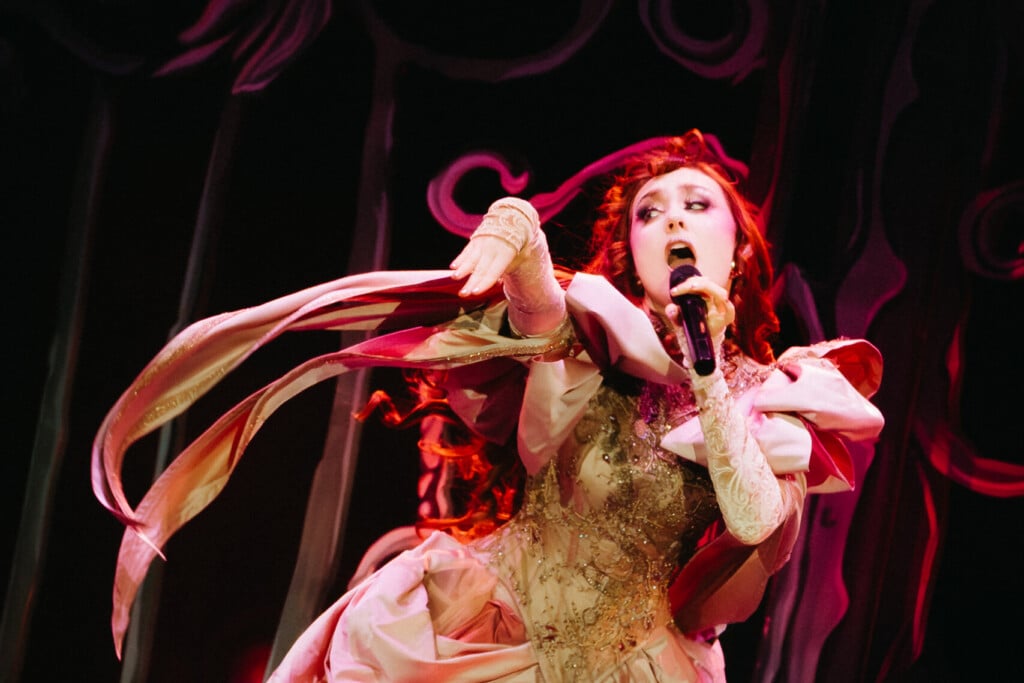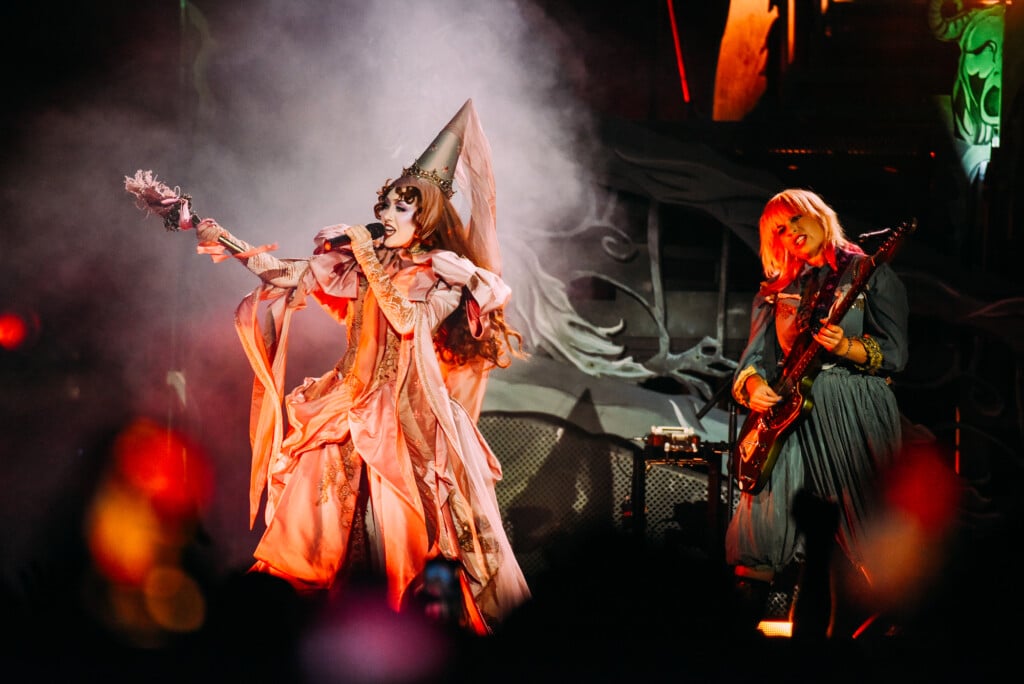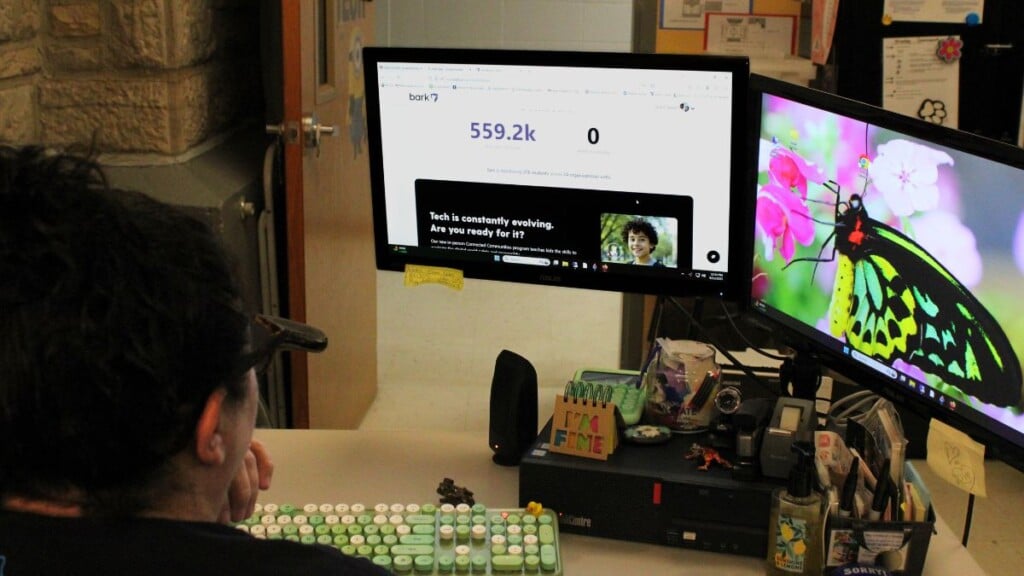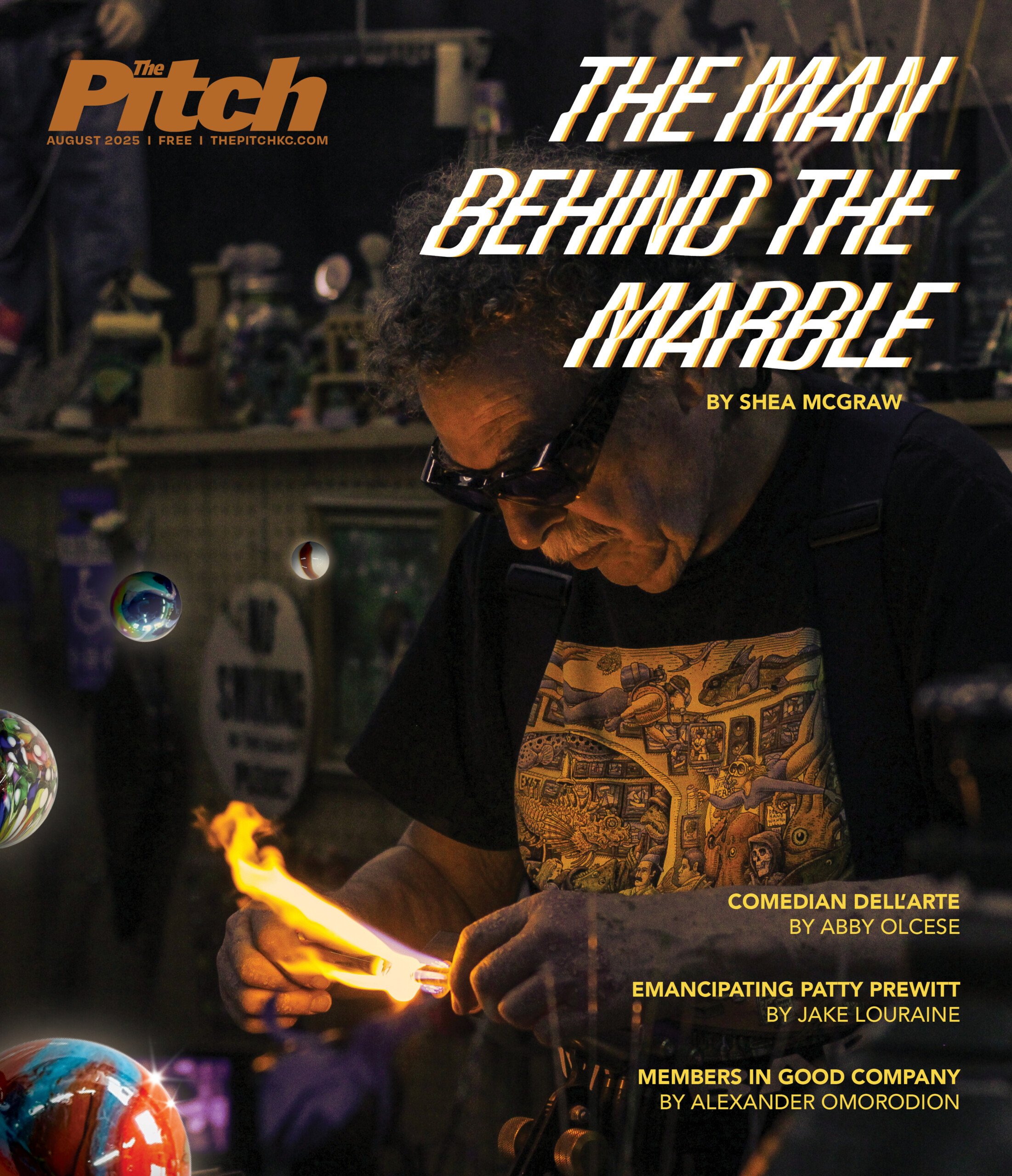Jessica Brandl gets a handle on Manifest Destiny and the Midwest


Jessica Brandl’s functional ceramics explore a rural Midwest that’s not the usual picturesque farm scenes. Her Great Plains is a place racked by distinctly regional threats: F5 tornadoes, flooding along Interstate 29, rural blight.
In one piece, a jar titled “Midwest of Oz,” a sinister twister curves toward a small farmhouse. Instead of lifting off to Oz, the house here is tied to the ground, straining against its tethers like a hot-air balloon awaiting launch. On the jar’s handle, a Plains Indian kneels in an iconic pose, drawing his bow.
Brandl’s latest exhibition at Red Star Studios captures a Midwest reminiscent of Oz in many ways — sunny adventure scenes, rendered as if in Technicolor, play out against subdued black-and-white backdrops of decay and disrepair. But unlike Oz, these exploits aren’t fictional. The artist stages historical scenes of westward expansion and Manifest Destiny in deteriorating, present-day rural landscapes to tell a story of migration and conquest. The Pitch visited Brandl’s Red Star Studios work space, where she created all of the pieces in the exhibition, as she wrapped up her time as an artist-in-residence there.
The Pitch: What inspired the connection between the doctrine of Manifest Destiny and abandoned modern homes?
Brandl: It starts really simple, with a domestic set of questions: “How did I get to the Midwest?” I grew up in Texas, in a busy place right outside of Austin, during the silicon boom, and my parents thought it was too big, too fast. We moved to Nebraska to revive the Brandl Electric company, so I moved from extreme progress to extreme emptying out. I was really isolated, surrounded by a lot of vacant houses, and I could explore those empty spaces, pick up artifacts, and I had the desire to collect these little things, and I wondered why it was right to leave all of these spaces and artifacts behind. It really is about my empathy for the buildings and their lack of usefulness.
Do you see that “emptying out” as a result of Manifest Destiny?
It’s a natural outcome, a continuation. Manifest Destiny was depicted historically with a lot of optimism, but now there’s a lot of social guilt from pushing out indigenous peoples. The whole show is based on a movement of peoples. It’s a matter of organisms: One wants the other’s space. Tolstoy talked about this with Europe in War and Peace. The boundaries change marginally, but not so much. Progress is a moving target. Our country had a lot of progress and success, but that seems to have moved on to places like China, where most things are made now. Not a lot is made in America anymore, so we’re left pushing old things around, relocating and repurposing them, which gives them a strange new identity.
You state on your website that your own family history is included in this exploration.
Yes. My family’s a part of Manifest Destiny. My grandfather wasn’t going to inherit land in Germany, so he relocated to Nebraska to receive land from the federal government. Americans were strategically placing tantalizers in Europe at the time to invite them over. He would get a land grant, build a crappy sod house and some barns, then sell them to new immigrants. He was flipping properties while he looked out for the best land. He was doing exactly what I have anxiety about. But I recognize that’s human nature. This was the land of opportunity. There was a lot of land, and people will take the opportunities they can.
Your pieces are all functional ceramics. Is that important for the show’s theme?
It is. I am a part of what I’m depicting. I’m working things out as a visual artist. So for me to rectify and save these objects I love and make them useful again is important. And given the practical attitude of Midwesterners, things having a dual function is important. You have a piece of art, but you may need to put snacks in it.
Or use one of the TV trays you’ve created.
The TV tray is an object that’s considered very low-culture, and these were the kinds of objects I’d find in abandoned spaces. These were the objects I knew. On “Columbia Sleeps,” the handle of the jar is modeled after an artifact found in the walls of my house. Inside the wall was this little naked white figure, and I made a mold of her. I think it speaks to the moral, conservative ethics of the Midwest that this naked woman was hidden in the wall.
How do you decide which scenes of expansion to stage in a particular place?
I start with a photographic collection, like a cultural anthropologist. Through collaging, more story is implied. I use image building to teach me the answers along the way.
The foreground of “Manifest” is derived from an old painting by the same name that was meant to drive people out West. It attracted them with a misplaced optimism. It was like propaganda.
The bright pops of color in some of your pieces seem to capture that spirit of propaganda.
I use high-contrast black and white because it’s attractive — if not pops of color, strong graphic implications. I’m using my own graphic tricks and techniques to attract an audience.
You mentioned Leo Tolstoy as an influence. Do you draw from any other artists?
A lot of writers. My smaller pieces are a lot like character studies. I work and think a lot like a writer. I love Steinbeck and Thornton Wilder — Our Town, particularly, because it’s so ordinary but beautiful in that universal ordinariness. That’s the nature of human existence, particularly in the Midwest. The Midwest looks simple but expresses something very complex about American life.
For visual artists, Karl Bodmer. He was an expedition artist who explored the West with Maximilian right after Lewis and Clark, and did etchings of images so characteristically American and Midwestern: bison, big fluffy clouds. He had a great way of capturing what things look like right now.
What are you working on now?
I just started working on a platter inspired by the albatross in “Rime of the Ancient Mariner.” I love the poem, the theme of sins against nature. Along the way of researching my subject, I found that albatrosses are in trouble because they eat a lot of inanimate objects — plastic, cigarette lighters. The albatross has the same problem as me: too much stuff.




